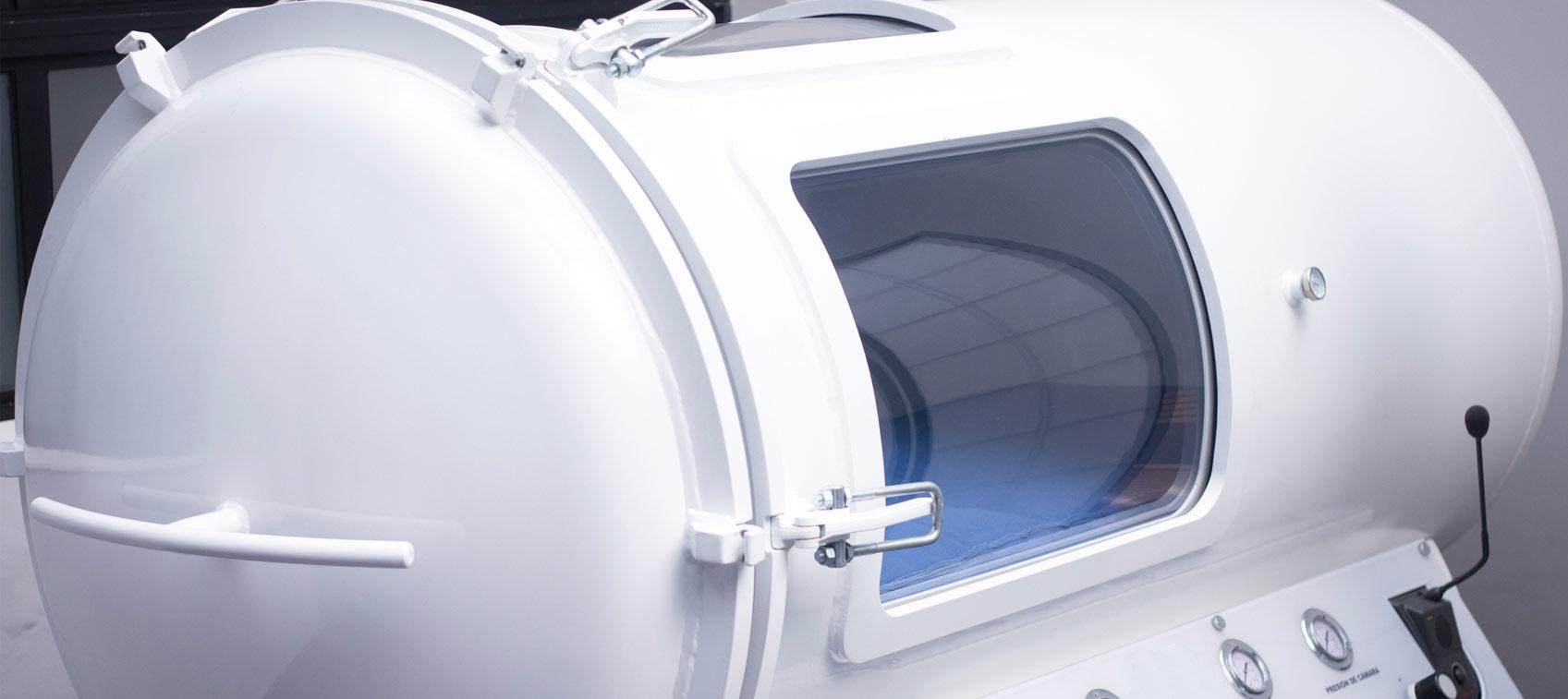
Hyperbaric oxygen treatment (HBOT) is the most efficient method of transporting oxygen to cells throughout the body. This increased level of accessible oxygen provides numerous benefits, making HBOT an exceptionally effective treatment for a wide range of health conditions.
How Does Hyperbaric Oxygen Treatment Work?
When you breathe oxygen at normal atmospheric pressure, it is transported on the hemoglobin in your red blood cells. When 100 percent oxygen is breathed under pressure, it dissolves in all the body’s fluids, including the plasma, cerebrospinal fluid in the brain and spinal cord, and lymph. It is therefore easily delivered to all tissues, and even areas with limited blood flow receive the tremendous healing benefits of oxygen.
Wound-Healing Wonder
Hyperbaric oxygen is a proven therapy for wounds, skin infections, burns, spider bites, and injuries of all kinds. The massive influx of oxygen reduces inflammation and curbs infection by providing a hostile environment to anaerobic bacteria, which thrive in the absence of oxygen.
Hyperbaric oxygen treatment is an ideal therapy for diabetic ulcers, in particular, which lead to 73,000 amputations annually. Just imagine how many limbs could be saved and how much pain and suffering reduced with routine use of HBOT.
Another benefit of HBOT is it signals the release of reparative stem cells and growth factors. Studies show that after just one hyperbaric oxygen treatment, concentrations of circulating stem cells doubled, and after a full course, there was an eight-fold increase.
Hyperbaric Oxygen for Stroke Recovery
Strokes cut off blood flow in the brain. Deprived of oxygen and glucose, brain cells in the immediate area die and those nearby go into “hibernation”—they’re still alive but nonfunctioning. No therapy can raise the dead, but by flooding the brain with oxygen, hyperbaric oxygen treatment provides the energy needed to revive stunned neurons. It also reduces swelling and activates cell regeneration and angiogenesis (formation of new blood vessels), which promote the brain’s ability to develop new connections and compensate for injury.
The ideal time to receive hyperbaric oxygen treatment is immediately after a stroke, but that option is rarely offered. Fortunately, HBOT is beneficial at any time. Israeli researchers conducted a trial of patients who had enduring deficits from strokes suffered six months to three years earlier. Forty treatments resulted in remarkable improvements in function and quality of life.
Hyperbaric Oxygen for Traumatic Brain Injury
Hyperbaric oxygen treatment is the best available treatment for another common cause of brain damage: traumatic brain injury (TBI).
Hall of Fame quarterback Joe Namath is a vocal proponent of HBOT, based on his personal experience and his concerns about the TBI-related degenerative brain diseases in more and more retired pro football players. Military veterans suffering with TBI or post-traumatic stress disorder also report great results with this therapy.
You’d think neurologists, the Veteran’s Administration, and the National Football League would be on the frontlines promoting HBOT, but that isn’t case—for all the wrong reasons. As Kenneth Stoller, MD, explained in a 2015 article, “HBOT is an efficacious, benign, and humanitarian way to affect brain repair but it has not been adopted because it lacks patent protection and has no large corporate sponsors. It has also met interference because other agendas are present be they the protection of the status quo, myopic budgetary constraints, or perceived liability issues.”
A Typical Session of Hyperbaric Oxygen Treatment
During a hyperbaric oxygen treatment session, you sit or recline comfortably in a pressurized chamber while breathing 100 percent oxygen through a mask. You can listen to music, read, watch a movie or simply relax.
As the chamber is pressurized, you may notice increased pressure in your ears—a feeling similar to that of a flight landing—but there is no other discomfort. When the hyperbaric oxygen treatment session ends, the pressure slowly returns to normal.
A typical hyperbaric oxygen treatment session lasts 45 minutes to two hours. Treatments are repeated, depending on the condition, anywhere from five to 40 times.
Other Conditions Treated By Hyperbaric Oxygen
Hyperbaric oxygen treatment has also been demonstrated to improve quality of life in patients with fibromyalgia, terminate acute migraines and cluster headaches, reverse sudden sensorineural hearing loss, and reduce symptoms of ulcerative colitis. HBOT even has an adjunct role in cancer treatment: It sensitizes tumors to radiation and reduces adverse effects of chemo/radiation.
Other conditions and health concerns HBOT can be used for include:
- Autism
- Multiple sclerosis and other autoimmune diseases
- Musculoskeletal injuries
- Neurodegenerative disorders
- Post-surgical healing
Don’t expect to hear about hyperbaric oxygen treatment from mainstream doctors—most won't acknowledge the benefits of it. But for stubborn conditions that don’t respond to conventional treatments, HBOT is a true game changer.


